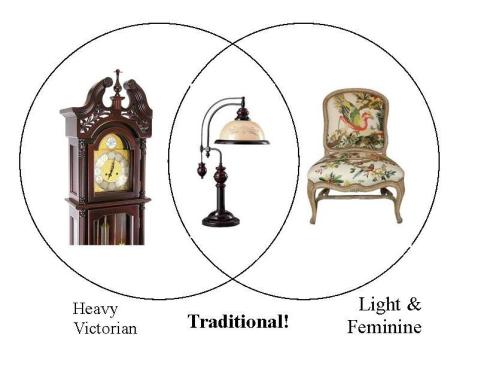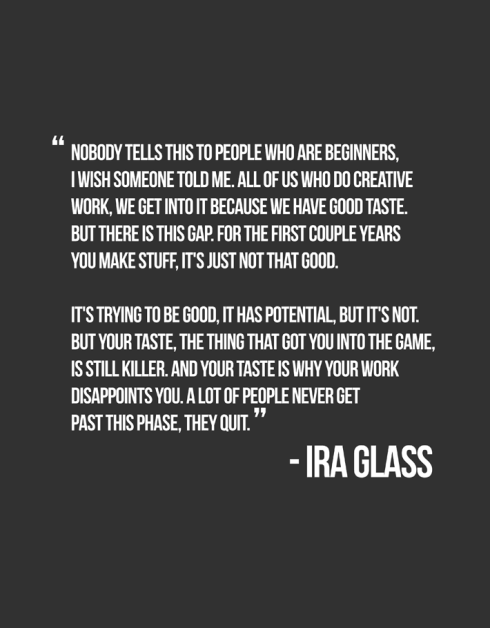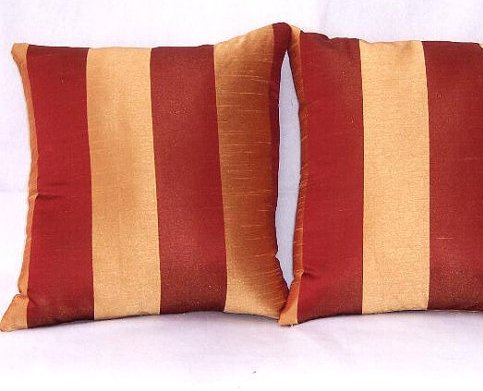You are currently browsing the monthly archive for September 2012.
Monthly Archive
Blending Styles: Finding A Happy Medium, Part 2
September 26, 2012 in Decorating | Tags: advice, style | Leave a comment
To continue where I left off in my last post…
So I have these three principles that seem to work when it comes to combining two peoples’ styles of decor that differ either a little or a lot.
- Find where your styles overlap
- Learn how to use more than one style in a room gracefully
- Compromise: it may not be what either of you had as your first choice, but if it makes both of you at least moderately happy, it’s a win.
Let’s take it step by step.
1. Find where your styles overlap.
Depending on your styles, this can happen in different ways. For us, the Chief tends to go for dark, heavy, carved wood things that are ornate and embellished. To me this looks gloppy and I prefer lighter colored pieces with gentler, simpler lines. But I’ve discovered that when it’s boiled down, we both like well-crafted pieces with traditional outlines. He might like Gothic and I might like Pottery Barn, but we both like Traditional. There’s some overlap.
Maybe you like ethnic world travel decor and he likes smooth and streamlined midcentury modern. You might find overlap in certain types of textile prints, or in one or two colors you both gravitate toward. This gives you a safe place to start.
See if you can get past the head butting and find that common ground. You both want a space that is relaxing and feels like home, so find out where your styles have overlap.
2. Learn how to use more than one style in a room gracefully.
True confessions: the most explicit instructions I’ve heard for this is from Emily Henderson’s TV show Secrets of a Stylist on HGTV. Most designer mix styles, but they don’t usually give you anything concrete for how to reproduce the same results. Emily’s stock in trade is that she takes two styles, often quite different, and meshes them successfully.
There is a lot to what she does, but I have picked up one specific trick and I now shall pass my hard-won knowledge on to you! Mix styles by keeping the furnishings in one basic style and the accessories and/or perimeter (walls, ceiling, floor) in another. Emily might throw in one or two snips of the other style, but no more – this way the furnishings don’t end up looking like an unconsidered mishmash. With the perimeter done in a contrasting style, somehow everything ends up looking original and creative, yet designed with intentionality! Each person has enough of “their” style to feel at home, too. Here is an example from her website. I see a graphic modern perimeter and accessories, and 60’s/70’s furniture:
And last but not least…
3. Compromise: it may not be what either of you had as your first choice, but if it makes both of you at least moderately happy, it’s a win.
Ok, kind of a no brainer but it must be kept in mind at all times, if you are serious about both of you being happy in your space and not resorting to manipulation! I feel the same way with baby names, actually. What you name your kids might not be your first choice or your husband’s first choice, but if you can find something you’re both pretty happy about, you can agree on it and move forward. Pioneer Woman blogged about this recently… her favorite boy’s name is Ashley (!) and her husband was intent on naming their firstborn son Bull.
So the point is, work it out and make a home you both enjoy!
I hope this helps you get some ideas for how to handle clashing styles. Do you have any brilliant tips you’ve discovered yourself? I’d love to hear!
Blending Styles: Finding A Happy Medium
September 19, 2012 in Decorating | Tags: advice, style | 1 comment
One of the challenges of living with another human being is that tastes differ. When it comes to decorating, that means you have this big, permanent living space all around you every day and it needs to make everyone feel comfortable and at home. So how do you handle decisions in home decorating when you have different opinions about what looks good?
In my journeyings across the blogsphere I have heard mythic tales of husbands who give their wives free rein to decorate how they wish. I’m guessing either they have no strong opinions about decor themselves, or their wife is so into what she does with the home that they let her have her way. Maybe there’s some browbeaten husbands in there too who have just thrown up their hands and given up on having input :)
For those who have such men in their lives, congratulations, all you need to worry about is honing your own sense of style!
As for me, I have the more interesting and more challenging scenario where the Chief has strong opinions about decor and has different taste than me.
He likes this vanity:
I like this one:
Source: potterybarn.com via Kate on Pinterest
He likes this coffee table (he actually has one like this but longer… it was one of the first things I put in storage when we got married…)
I like this one:
What does a person do with these differences in taste? Pout, wheedle, ignore, mow down, insult?
Bad ideas! (It is slightly possible that that is experience speaking there.)
I’ve discovered a few foundational principles through trial and error that make combining the styles of two very different people not only possible, but delightful.
- Find where your styles overlap
- Learn how to use more than one style in a room gracefully
- Compromise: it may not be what either of you had as your first choice, but if it makes both of you at least moderately happy, it’s a win.
Now for the tease: this was originally going to be a single long post, but as I worked on it, it became clear that it would be way too long. So I’ll go into detail on my three foundational principles in a second post – look for it this weekend!
Plowing Through: The Table Search
September 13, 2012 in Decorating | Tags: dining table, farmhouse table | Leave a comment
That’s a pun because I’m looking for a farmhouse table on Craigslist, see? Har har :) Last week I found an amazing used one from World Market, whose tables are heavy and sturdy, and it was totally underpriced. It had fat, unique, curvy turned legs, was a great warm brown, came with a leaf, and was the perfect size. I emailed the seller but someone else got there first. Aaarrrghhh!! Since then I’ve had my Craigslist search page open on a tab at work and am refreshing it every hour at the most. Losing the “perfect” piece can make you craaazy like that, you know?
My initial requirements for this table were:
- mid brown tabletop, painted legs OK
- solid surface that does not have crumb-collecting cracks between planks
- interesting turned legs positioned at the corners and a rectangular shape
Today I took a closer look at the tables I’d pinned on my Dining/Table board, and I realized I could modify my search a bit. Several of the tables I really love have some sort of trestle leg arrangement. So long as they’re placed so that knees and pushed-in chairs don’t hit them, I’m planning to include that as a possibility as I search. I also noticed that I like the ones that aren’t painted at all the best. I might still end up with painted legs – it depends what I find – but that’s something good to be aware of.
I found this neat table today while toying with the idea of building my own table (ha! given what I want, that’s just impatience speaking) and realized painting the legs brown could work, if it initially comes with white, black or green legs.
Source: tablelegs.com via Julie on Pinterest
These are a few of my other favorite tables. You can definitely see the similarities from table to table.
Source: decorpad.com via Julie on Pinterest
Source: paloma81.blogspot.com via Julie on Pinterest
Source: younghouselove.com via Julie on Pinterest
Source: brynalexandra.blogspot.co.uk via Julie on Pinterest
I’m having fun looking on Craigslist, but I will probably also head out to a huge furniture resale store I know and see what they have. Their prices are low and their selection is big enough to make it worth the trip. I plan to visit that store with my mom when she comes to visit in three weeks, if I don’t find what I want before then!
A Room [In A Style] Of One’s Own
September 6, 2012 in Decorating | Tags: style | Leave a comment
I promised in my last post that I’d share how I’ve been groping my way towards a sense of personal decor style. I think Blind Man’s Bluff might be an appropriate metaphor… I have to keep reminding myself that even though I’ve been interested in decorating and houses almost all my life, I haven’t made a study of it for long and I should expect honing my style to taking time, just like any artistic endeavor!
Let’s see, what hindered me from sorting out my own decorating style?
- liking most of what I saw in my sole shelter magazine subscription, which is trend heavy (ditto for many DIY blogs actually)
- liking the white spaces everywhere that photograph so well
- not thinking about classic design, having been dropped straight into chevrons and ikat in 2011
- not having a sense of what would translate well from liking it in a photo, to having it work in my particular home
- trying to figure out my husband’s style preferences and how to integrate them with mine (a blog post in itself)
- having no methods for knowing if an item I started to drool over was “the one” I’d been waiting for
I am not the best at waiting patiently for the right thing to come along, and I’m not always able to tell if something I like IS the right thing! So I needed some methods.
There were a few things I learned as I went along that are helping me to become more consistent with my style.
- Fieldstone Hill Design’s invaluable series on defining your style gave me a list of 5 defining words that ought to fit anything I purchase, and 3 no-buy words that, if they fit, mean… I need to put it back on the shelf after I’m done admiring it. This has helped me so much to identify and edit what will and won’t work in my house when I’m out shopping.
- I have a very masculine husband who works on vintage cars most weekends. This means car grease, driveway dust, and black smudges come into the house despite his best efforts… white/light furniture & textiles do not work with this reality! Good practice for kids, hey.
- Even though I find myself drawn to colorful items and graphic prints in the stores, when I bring them home they just sit there uneasily and I find myself feeling like I wasted money. It’s taking time (I speak in the present tense for a reason!) to learn to lean toward muted colors, low contrast patterns, and textured objects.
My five defining-style words are:
- graceful
- well-crafted
- inviting
- casual
- mischievous
- and a bonus phrase of imagery… all the time in the world
My three no-buy words are:
- graphic
- bright
- clever (tend to be things I admire rather than love)
So here are some examples of things I really love. The ones that fit most or all of my defining style words and can take some contact with a mechanic are the ones I’m learning to use as inspiration. The other ones are just for admiring.
NO! Graphic. Love it, and it will not work at home.
YES! Muted and textural, not neutral but not screaming I’m Colorful
NO! White furniture, breakable lamp bases, graphic suzani cushions. Isn’t it lovely though? PB does a great collected look. The cognac leather armchair, on the other hand, I could totally get.
YES! Scuffable floors and furniture, washable accent textiles in traditional patterns.
Source: agentbauer.com via Kristín on Pinterest
HECK YES! Lots of texture and interest going on here, and it’s graceful, casual, inviting, well-crafted, makes me feel like I have all the time in the world to relax and enjoy the space. Just hang a lobster lithograph for the mischievousness and I’ve got every one of my key words represented.
Source: eclecticrevisited.com via Reny on Pinterest
NO! Gorgeous green graphic pillows. When things are this contrasty, it doesn’t work at home. I still want them.
YES! Stripes, while technically graphic, are far too traditional to read as pop-y. Low contrast helps.
So that’s a peek into my developing style and how it’s come about.
What have you learned about your style as you’ve decorated your home? Are there certain types of things you find yourself wanting that just don’t work when you try them out? Have you thought about what words truly define YOUR style?




















